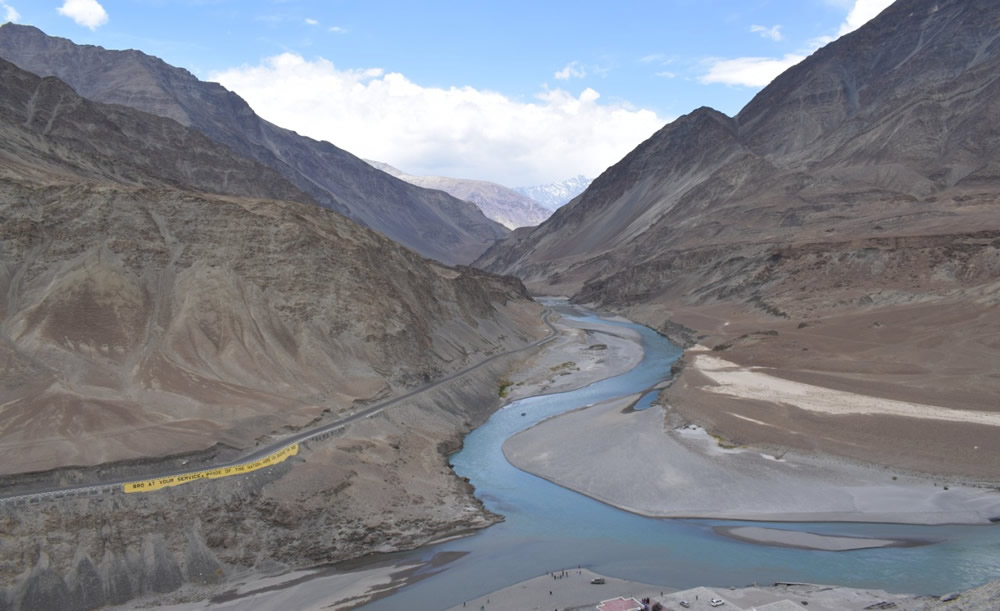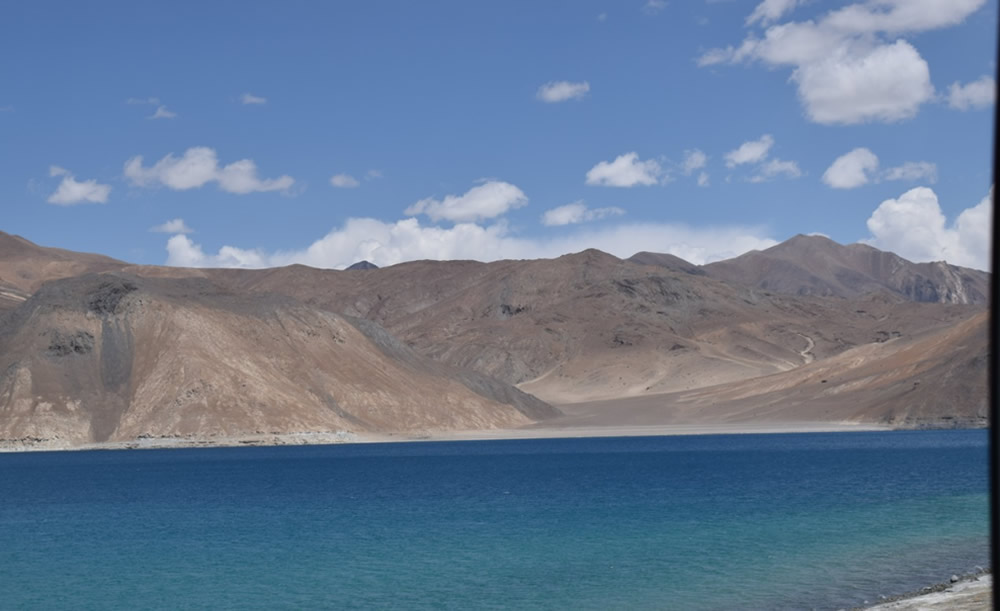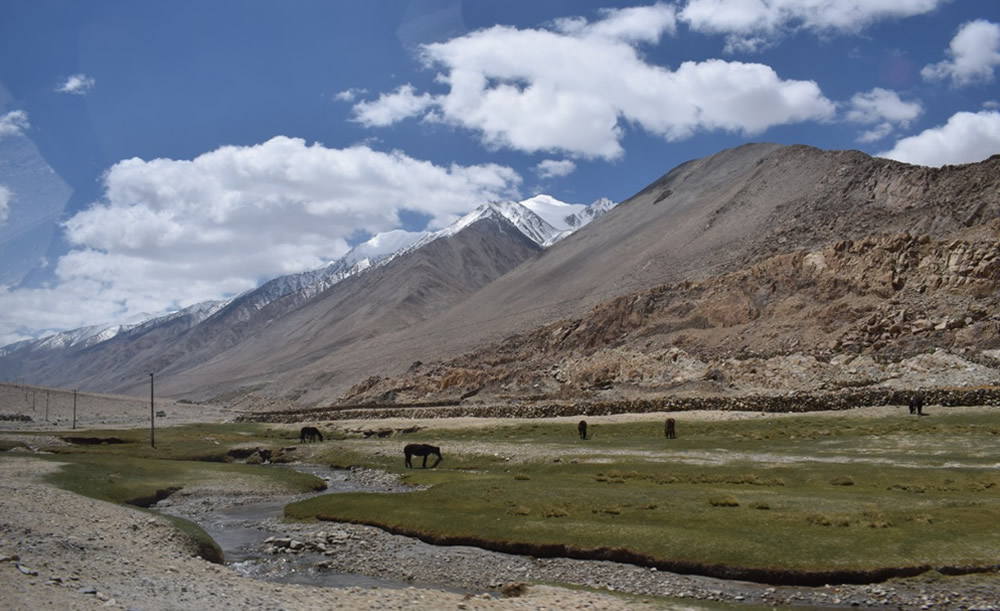Ladakh. What is the first image that comes in your mind when you think of this one place? What do you see when you picture it? I am pretty sure it is snow-capped mountains, clear sky, a lake; and not two nations fighting as it is now. But let us not delve into that and remember what it was, what it used to be, and hopefully, what it will always be: a mesmerizingly beautiful landscape that looks like it has been taken out of a painting.
Thanks to Bollywood movies like 3 idiots and Jab Tak Hai Jaan, Ladakh has suddenly topped every wanderlust’s wishlist. A ‘hill station’ which was considered fit only for the armed forces or the adventure lovers, suddenly became one of the most popular travel destinations among bloggers, foreigners, domestic tourists as well as those looking for some spiritual solace. From cold deserts and double humped camels to frozen lakes and fast-flowing rivers, it is a different world in itself. Common people of Ladakh are more or less untouched by the commercialization and artificial nature of the world. Tourism forms a major part of the revenue of the locals and, though it may seem ironic, they do what they have to do, to survive in that difficult terrain.
The sudden rage about bike trips and road trips to Ladakh captured every youngster's interest, and honestly, I was no exception. Pictures of the landscape captivated me to the extent that I could not think of visiting any place but Ladakh for our nextvacation. And when it finally happened, I couldn’t be happier.
The city of Leh welcomes you with a top view of the snow-capped mountains, greenish-blue lakes, and a few human settlements here and there. Situated on the western end of the Himalayas, Ladakh has four major mountain ranges – the great Himalayan, Zanskar, Ladakh, and the Karakoram all passing through it. You can only imagine the breath taking views and the experiences this place has to offer. Even the airport has a magnificent view but taking pictures is prohibited because of security concerns.
An important thing to remember when you visit Ladakh is to give yourself and your body some time to acclimatize with the temperature and air pressure changes. Although it is very tempting to go out and start exploring the city, it should be avoided at least on the first day to keep yourself up and coming for the rest of the trip.
The days where the itinerary was covered presented Ladakh in its true shining colors. It's a world of rugged valleys, snow-covered mountains, endless hills, barren lands, clean and curvy roads, and the mystical Lamas. The Alchi Monastery and Diskit Monastery are just two of the centuries-old monasteries that have still maintained their charm. Diskit Monastery is one of the largest Buddhist monasteries in the Nubra Valley. It houses the largest Buddha statue that is approximately 106 meters tall. Where Diskit Monastery is situated in a cold desert, Alchi Monastery is situated on the bank of river Indus. It houses a range of miniature wall paintings which are an amalgamation of Buddhist and Hindu artistic and spiritual elements. In addition to this, one can also visit Gurudwara Pathar Sahib,where a hot cup of chai will soothe your senses and provide you with some much- needed relief from all the traveling. In addition to being places of religious importance, these places make you feel so much at peace that you seem to forget all the hustle-bustle of the metropolitan city life and just live in the moment.

The confluence of the Indus and the Zanskar rivers, in the Nimmu valley, is a rare sight. One can differentiate between the two waters from a distance as they are in two different shades blue. This confluence, or sangam, is an excellent location for adventure sports like rafting. The rare phenomenon of Magnetic Hill leaves everyone astonished. For the uninitiated, the hill possesses magnetic properties that can pull cars uphill and compel passing aircrafts to increase altitude to escape the magnetic interference.
The most talked-about, and justifiably so, is the Pangong Lake, which undoubtedly is one of the most peaceful and serene places on this planet. At a (literally) breath-taking elevation of 14,000 feet above sea level, the lake presents a surreal spectacle. On a sunny afternoon, you will feel the scorching heat in addition to cold winds, strong enough to take away unhooked or unhinged items along. Nevertheless, the turquoise waters, rugged brown mountains, and a clear blue sky in the background is a sight to behold.

The way to Pangong Tso lake is no less challenging either. You have to pass through the Chang La pass, touted as the third highest motorable road in the world. That being said, the highest motorable road, Khardung La pass, is also situated in Ladakh (at the height of 18,000 feet above sea level) on the way to the Nubra Valley. With broken roads, snowfall and persistent risk of a landslide, traveling through these passes is no cup of tea. The anxiety paired with constant awe for the surroundings is a mixed feeling that is difficult to process. This anxiety turns into excitement as you come closer to Nubra Valley. It is a cold desert that is at a lower elevation than Pangong Tso lake. Double- humped camel rides, overnight camping, desert bike rides are a must. Imagine a much colder Jaisalmer, without the grandeur of forts and palaces of course (but that is a story for some other time). With a desert, river, lake, mountains, adventure sports, and life-changing experiences, did I not say Ladakh is a world in itself?
Unlike other 'tourist destinations' where you have to go to a certain spot to gather the beauty of the landscape, Ladakh offers beautiful landscapes throughout. It would not be wrong to say that The Journey is more beautiful than the destination. But for the oxygen and air pressure issues, there might even be times you won’t even realise that you’re more than 10,000 feet above sea level. You might come across animals grazing on far-reaching plain areas with grass all around and 30 minutes later, all you can see is a cold desert. That is how fast the landscape changes.
Calling the Ladakh plateau an enchanting beauty would not be an understatement. But next to all this beauty, what disappointed me was the 'mark' humans have left there. You could easily spot packets of potato chips, empty water, and soft drink (plastic) bottles, cloth pieces, plastic bags lying here and there, mostly in and around the “tourist spots”. The Ladakh fort, like all other forts in the country, had names of friends and lovers etched in the walls.
This makes me wonder, do we even deserve these places? Was it better when not many people knew about it? Was it better when there was all this mystery that surrounded Ladakh? Maybe. Maybe the universe has realized that this so called ‘superior’homosapiens race cannot find a way to co-existwith nature. Maybe us being so helpless as to be confined in our homes is a way of nature showing us the importance of co-existence. May be nature needed to heal and that is what it is doing. It’s high time we think about the impact our actions are having on the environment and what it’s repercussions could be.
Having said that, I just want to leave you with one question, was the untouched paradise a paradise because it was untouched?
The author's views are personal only.

